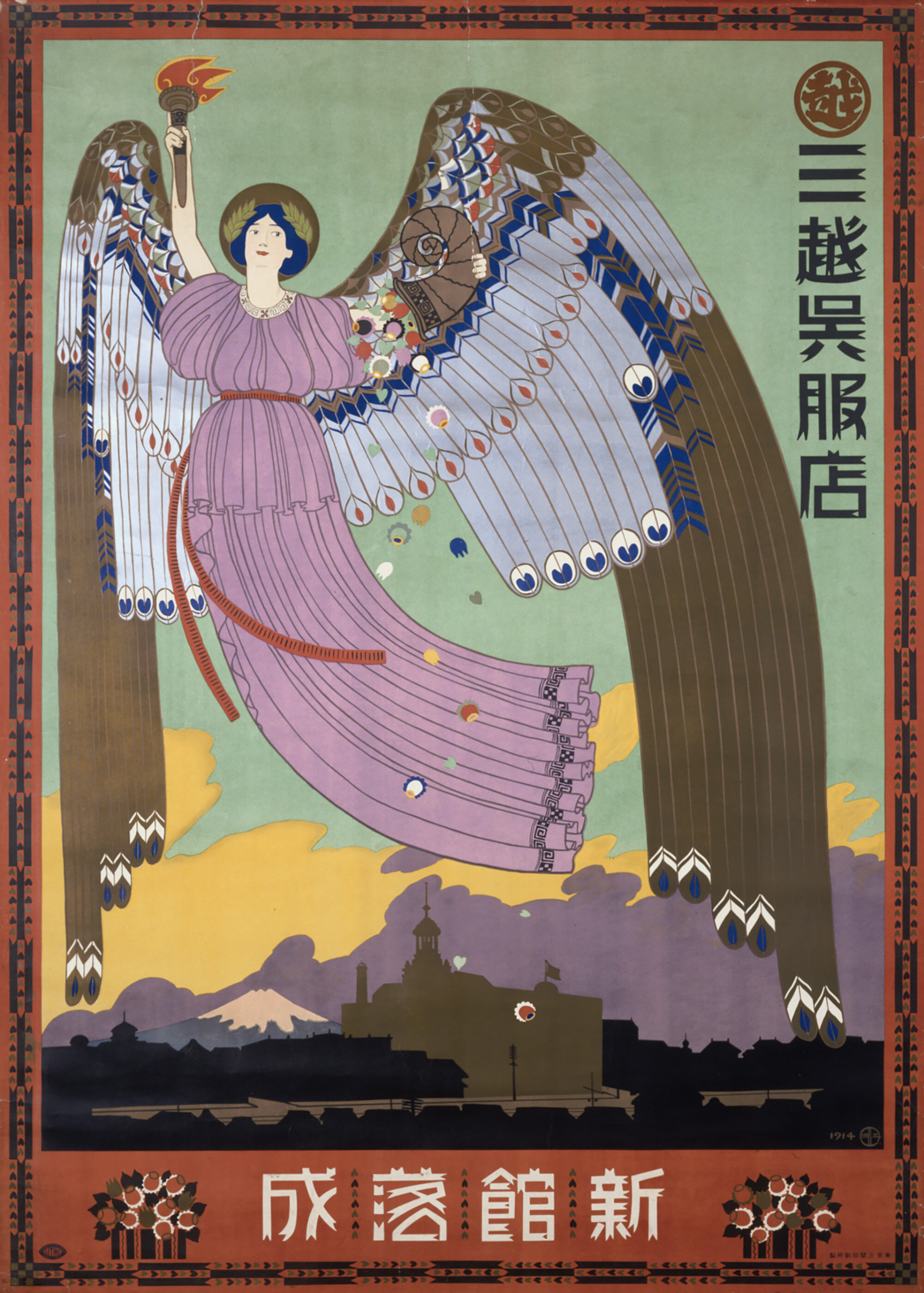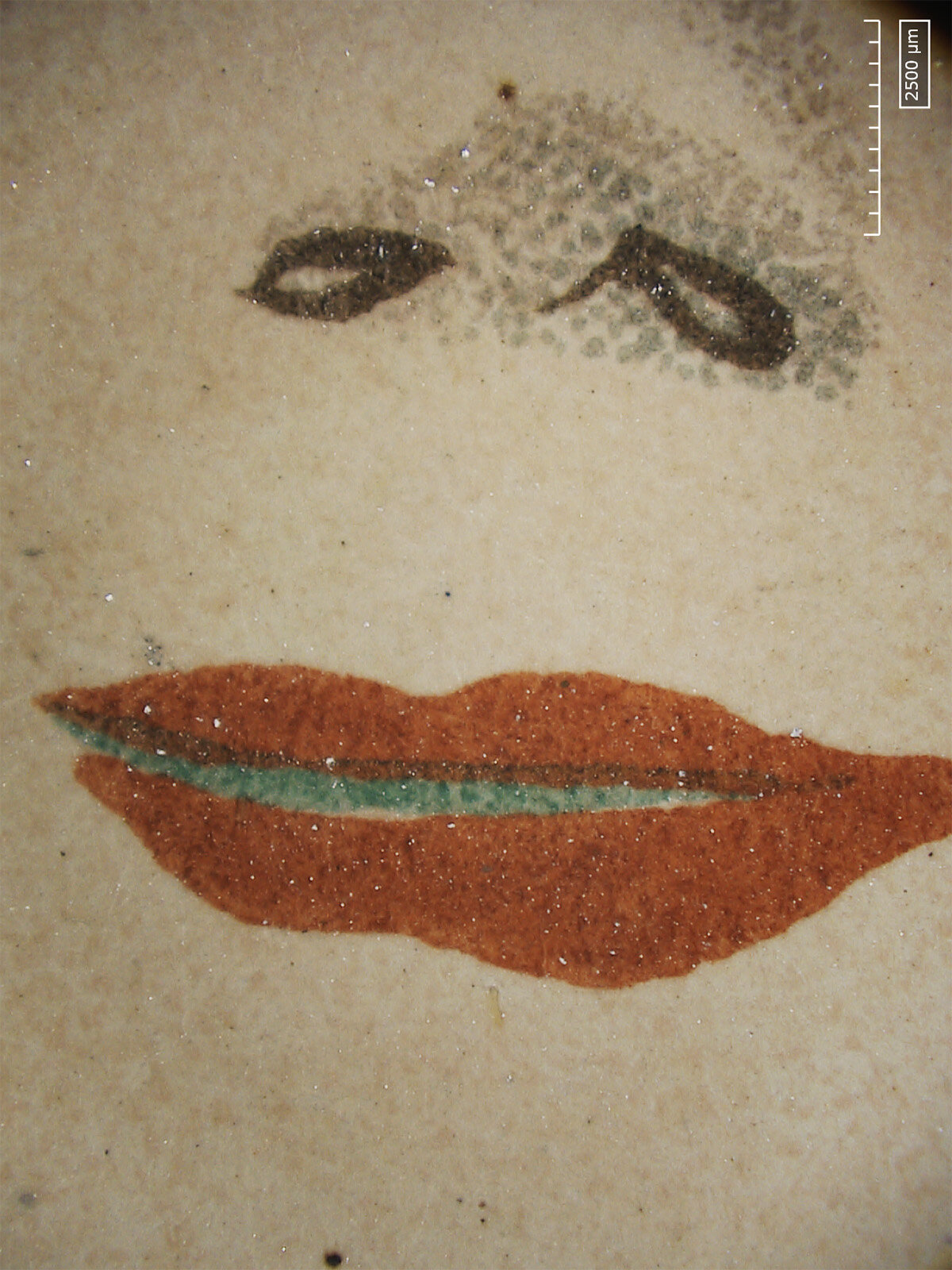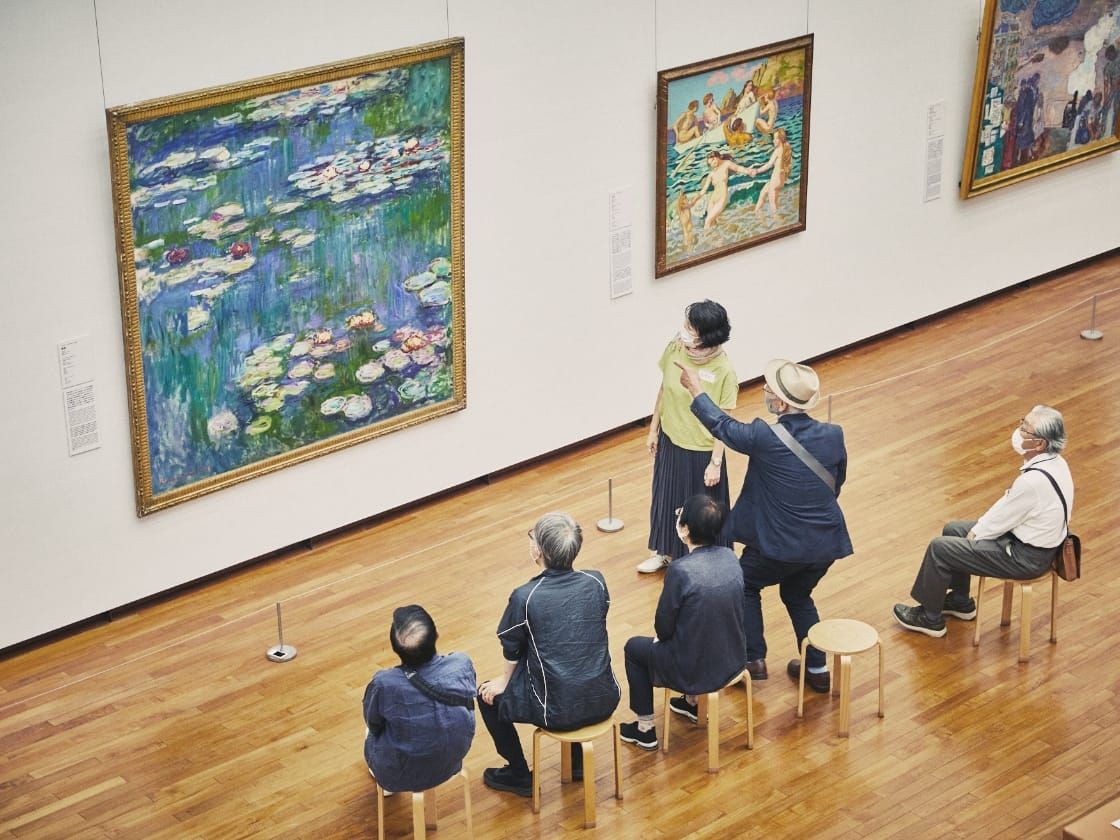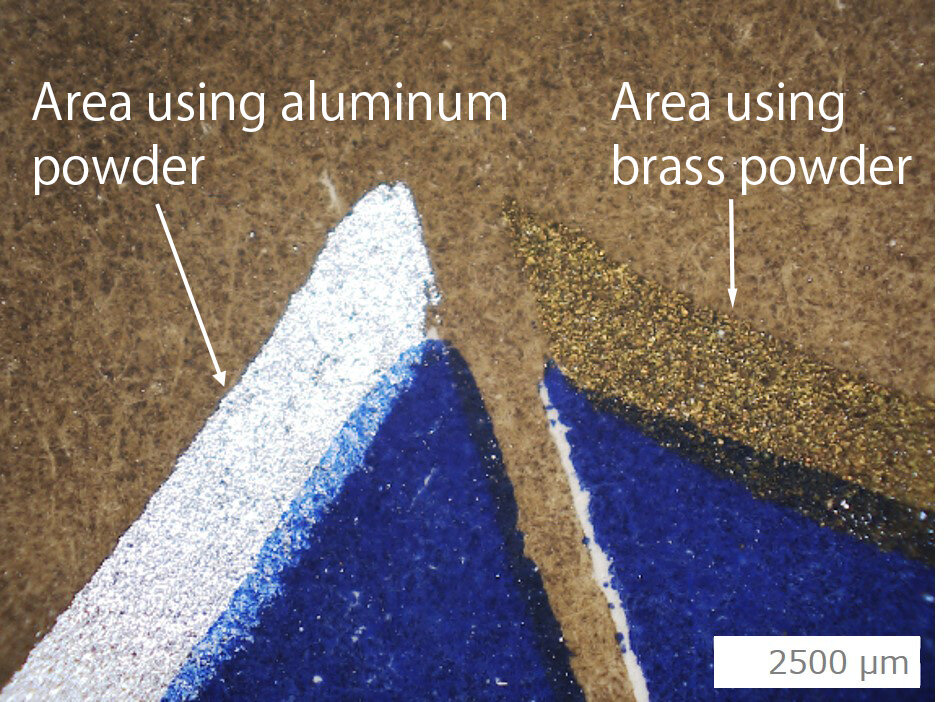Scientific Investigation of Posters by Sugiura Hisui
Nakao Yui National Center for Art Research
As part of its activities, the NCAR Collections group conducts scientific investigations of works in the collections of national art museums. In fiscal 2023, the Center’s first year, a team examined 11 graphic design works by Sugiura Hisui from the collection of the National Crafts Museum, including posters, original drawings, and magazine covers.
A research team composed of members from the National Crafts Museum (which houses the works being studied), the National Museum of Western Art, Tokyo Denki University, and Meiji University carried out the investigation over several days. Using X-ray fluorescence spectrometer, digital microscope, and UV-excited fluorescence imaging, they conducted an examination of the materials used in Hisui’s works.
Scientific investigation in progress (at the National Museum of Western Art in August 2023)
In the art history field, iconographic research on graphic design has made considerable progress. However, compared to painting and sculpture, material analyses of graphic design, and particularly the study of coloring materials that are a crucial element of the medium, have been few and far between. This marks the first time scientific methods have been applied to the study of Sugiura Hisui’s works, including not only those in the National Crafts Museum collection but also at other museums. This research has been made possible by the widespread use of portable X-ray fluorescence spectrometer for non-destructive, on-site analysis in the field of cultural property. Advances in equipment performance now enable detection of a broad range of compositional data, including on lightweight elements and trace elements that were previously difficult to identify.

Sugiura Hisui, Mitsukoshi Gofukuten New Building Completed, 1914, collection of the National Crafts Museum
This collaborative study focused on analyzing printing inks, particularly gold and silver. While posters and books printed with gold and silver inks are commonplace today, their vivid coloration continues to play a vital role in graphic design. The investigation revealed that the gold inks were composed of brass powder, while the silver inks were composed of aluminum powder.
A key achievement of this study was the comparison and verification of information about coloring materials, found in historical literature on inks, through direct analysis of actual works. While further investigation using different methods is needed, the team observed differences between coloring materials used in lithography and in woodcut printing, as well as variations in printing techniques even within the categories of gold and silver inks. This research provided direct insights into graphic art, and specifically into the inks and printing methods that graphic designers and printing companies selected from the options then available and how these were applied.

Microphotograph of angel’s face (traces of aluminum powder visible in mouth area)
Some results of this investigation were presented at the 46th conference of the Japan Society of the Conservation of Cultural Property in 2024, with more detailed findings to be published in issue 29 of the Research Bulletin of the National Museum of Modern Art, Tokyo. While this study has deepened understanding of the relationship between printing technologies and graphic art of Sugiura’s era, further application of scientific methods is expected to open up new directions in art-historical research.
Nakao Yui
National Center for Art Research








